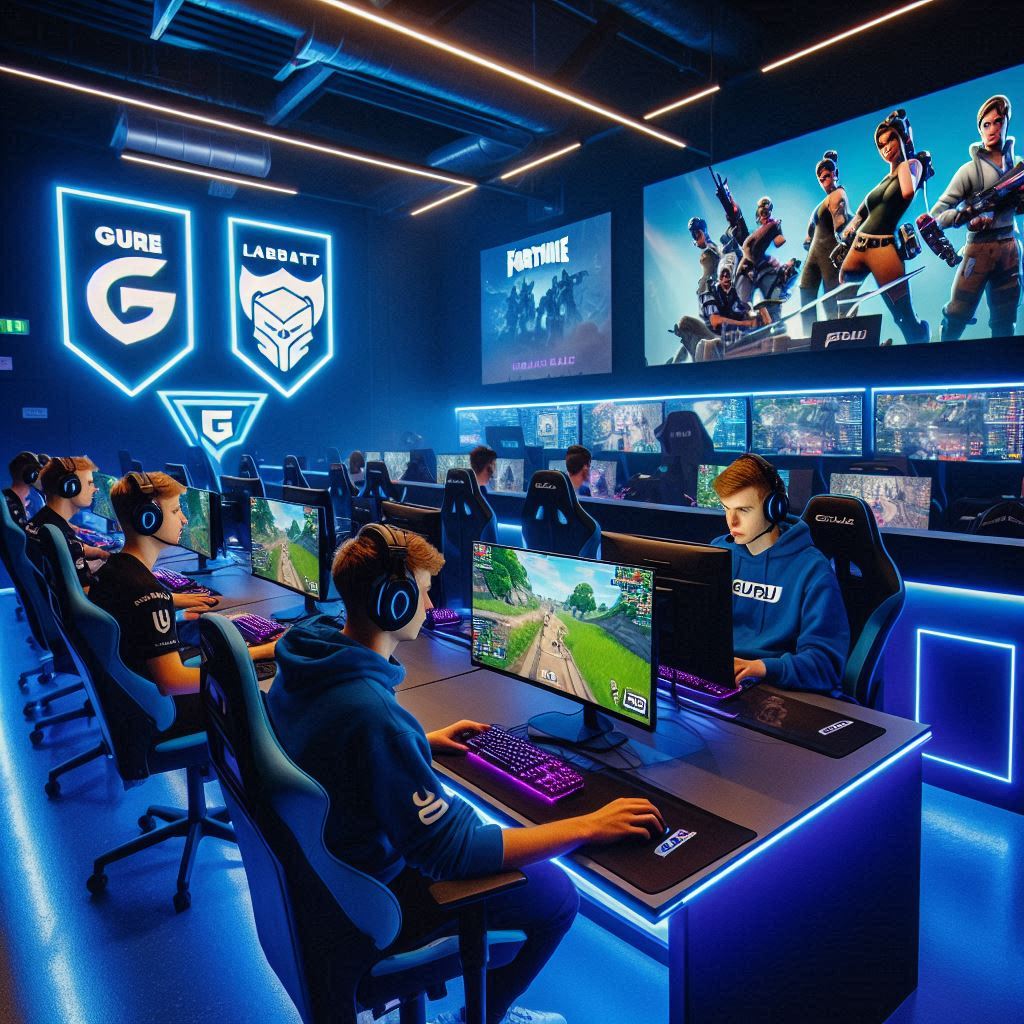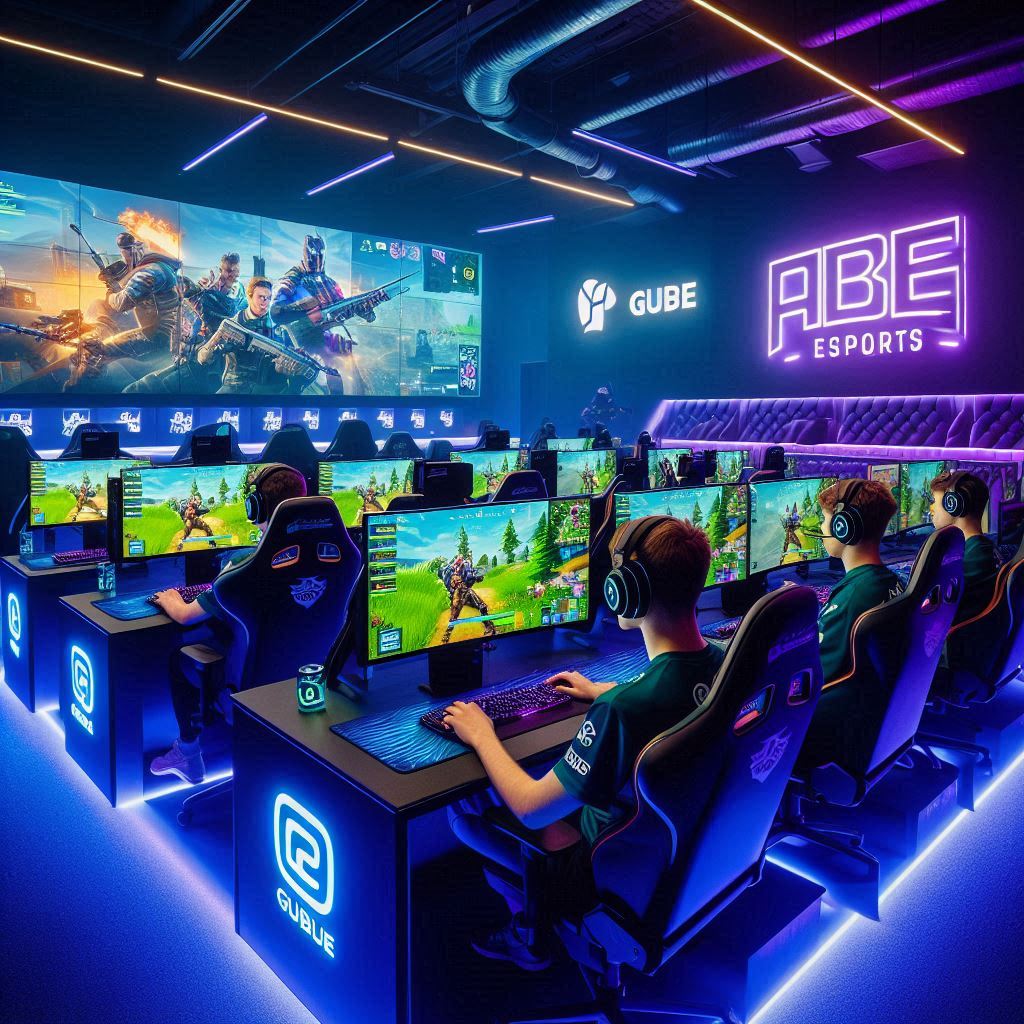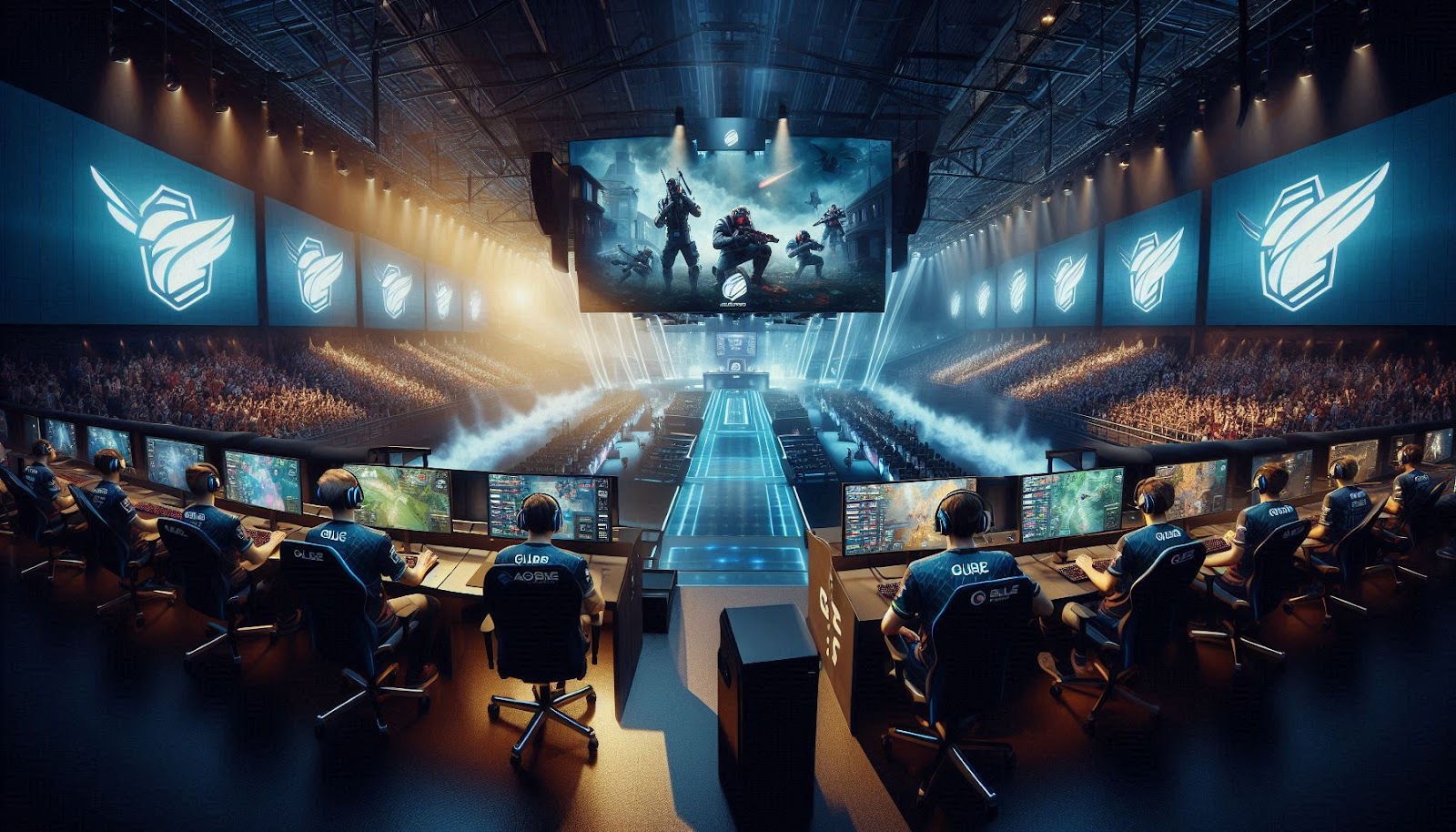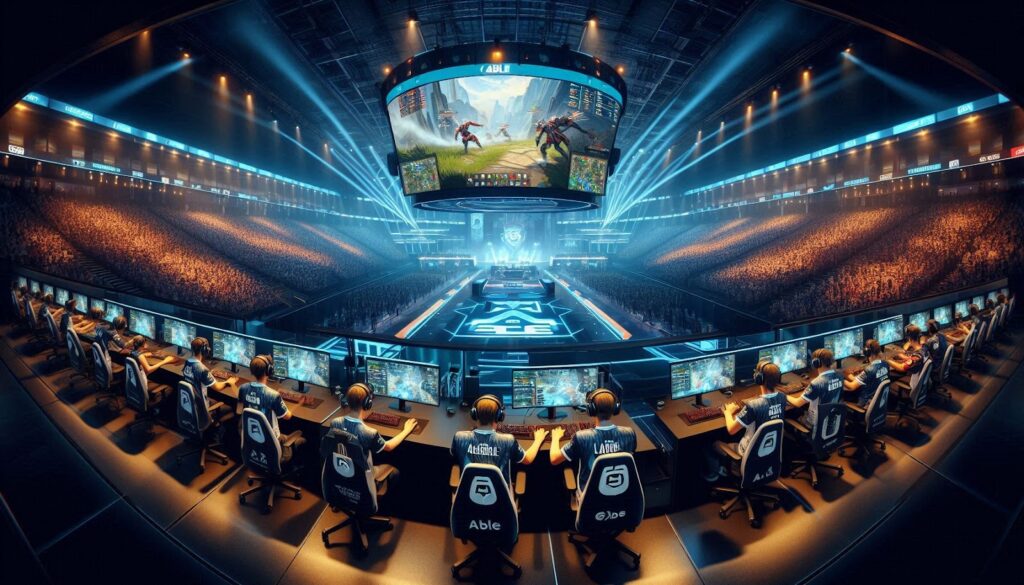The meteoric rise of esports—from late-night LAN parties to sold-out arenas—has been nothing short of cinematic. Yet behind the headlines and sponsorships lies a lesser-known force shaping the industry’s identity: the creative prowess of the B2B video production agencies that specialize in this space. These agencies are the silent architects of esports branding, developing immersive visual narratives that elevate gaming teams from competitors to cultural icons. What’s truly compelling is how they’ve built entirely new visual languages tailored to the fast-paced, digital-native world of competitive gaming—languages that resonate deeply with both Gen Z fans and major corporate sponsors. In an industry where image is currency, these B2B storytellers don’t just keep up with the game—they help define it.
The challenge facing many esports organizations today isn’t simply gaining visibility – it’s crafting an authentic brand narrative that resonates with notoriously discerning gaming audiences while simultaneously appealing to mainstream sponsors and investors. Traditional marketing approaches often fall flat in this unique space, failing to capture the distinctive culture and energy that defines competitive gaming. Teams struggling with this disconnect frequently find themselves with disjointed branding that fails to engage either their core audience or potential business partners.
Professional gaming organizations face a distinct branding paradox that traditional sports teams don’t encounter – the need to establish team identity while simultaneously highlighting individual player personalities who often have larger followings than the organizations themselves. This balancing act requires specialized visual storytelling techniques that many conventional marketing agencies simply haven’t developed. The solution, increasingly, comes from specialized production teams who understand both the business objectives and the cultural nuances of the gaming world.
Beyond Pixels and Players: The Visual Alchemy of Esports Identity
When OpTic Gaming decided to rebrand after their acquisition by Envy Gaming in 2021, they faced a daunting challenge: how to preserve their 15-year legacy while signaling their evolution. Their collaboration with a specialized video production team resulted in content that increased their social engagement by 347% during the rebrand period – a testament to how professional visual storytelling can transform a potentially risky transition into a brand-strengthening opportunity. This type of sophisticated visual communication doesn’t happen accidentally; it requires a deep understanding of both business objectives and gaming culture.
The most effective esports visual content operates on multiple levels simultaneously, and this, perhaps, constitutes the real genius of specialized production agencies in this space. Their work must appeal to the teenage Twitch viewer while simultaneously convincing Fortune 500 marketing executives of the value proposition. In practical terms, this often means creating video content with layered messaging – high-energy gameplay highlights interwoven with subtle brand positioning cues that speak to business audiences. The technical execution here matters tremendously, what industry insiders sometimes call “the 60FPS factor” – where production values must match the visual fidelity gamers experience in their games.
Video production for esports requires a unique technical approach rarely found in traditional marketing. For instance, when Team Liquid worked with production partners to create their championship journey content, they utilized gaming-specific techniques like motion-tracked statistics and in-game perspective shifts that increased viewer retention by 42% compared to their standard content. Adapting specialized visual techniques from the games themselves – like using familiar UI elements or recognizable visual cues – creates a sense of authenticity that resonates powerfully with gaming audiences while still delivering professional polish for business partners.
The esports audience demonstrates remarkable sensitivity to visual authenticity, often rejecting content that feels “corporate” or disconnected from gaming culture. This creates a particularly complex challenge for brands seeking to engage this demographic. Studies show that 76% of esports viewers can identify sponsored content within seconds, and 64% report negative brand perception when that content feels inauthentic to gaming culture. Production agencies specializing in this space have developed techniques to overcome this hurdle, including employing directors and editors who are themselves gamers, utilizing game-authentic visual language, and incorporating community in-jokes and references that signal cultural fluency.
The Invisible Technical Revolution Behind Competitive Gaming’s Visual Identity
Most outsiders fail to appreciate the technical complexity involved in modern esports production. Behind the seemingly straightforward gameplay footage lies a sophisticated production infrastructure that often surpasses traditional sports broadcasts in complexity. One professional CS:GO match may utilize over 20 different camera angles, including player cams, in-game observing positions, crowd reactions, and augmented reality overlays. Coordinating these elements requires specialized technical knowledge rarely found in conventional video agencies.
The rendering requirements alone represent a significant technical hurdle. When Cloud9’s b2b video production agency created their championship recap content, they processed over 14 terabytes of footage, utilizing custom-built workstations with specialized GPUs optimized for gaming graphics. This technical capacity allows for the seamless integration of in-game footage with live-action elements – a hallmark of premium esports content. Yet these technical considerations extend beyond mere hardware specifications; they encompass an understanding of game-specific visual languages that vary significantly between titles.
What’s especially noteworthy, and indeed sometimes overlooked in industry discussions, is how production techniques vary dramatically between different gaming titles. The visual approach that works brilliantly for a League of Legends team would feel entirely inappropriate for a Counter-Strike organization. Successful production partners develop game-specific capabilities – understanding, for example, that Valorant content benefits from quick-cut synchronization with ability usage, while fighting game footage requires frame-perfect editing to highlight technical execution. This specialization represents a significant investment that generic production houses often cannot justify.
The technical challenges extend to distribution as well. Unlike traditional sports content, esports video must perform across an unusually diverse ecosystem of platforms, each with distinct technical requirements and audience expectations. A single piece of content might need versions optimized for Twitch (where 60fps is expected), platform-specific cuts for TikTok and Instagram, and perhaps most challenging, versions that perform well on Discord – a platform rarely considered in traditional media planning but central to gaming communities. Production agencies that truly understand the esports landscape build these technical considerations into their workflow from the outset.
Financial Gamification: The ROI Mathematics of Esports Visual Content
Beneath the flashy graphics and impressive gameplay footage lies a sophisticated business calculation. For esports organizations operating on increasingly tight margins, every production dollar must deliver measurable returns. The numbers here tell a compelling story: teams working with specialized production partners report sponsorship retention rates averaging 74% compared to an industry average of 41%. This effect is particularly pronounced for non-endemic sponsors – those from outside the gaming industry – who rely heavily on their production partners to translate their brand values into gaming-authentic content.
The investment metrics have shifted dramatically in recent years. In 2018, a mid-tier esports organization might allocate 12-15% of their budget to content production. By 2024, that figure has typically doubled to 24-30%, reflecting the growing recognition that compelling visual content drives multiple revenue streams simultaneously. Production budgets now frequently operate as multipliers rather than expenses – with data suggesting that organizations receiving the highest valuation multiples during funding rounds are often those with the strongest content operations. One North American organization attributed 40% of their recent $37 million funding round to the perception of brand value created through their content ecosystem.
Sponsorship activation represents the most direct revenue pathway influenced by video production. When FaZe Clan collaborated with Nissan on their “Innovative Drives” campaign, the production approach yielded 3.8x higher engagement than Nissan’s traditional sports sponsorships while costing approximately 30% less. The production strategy – which seamlessly integrated product placements within authentic gaming moments rather than traditional advertisements – generated over 14 million organic impressions. This represents the fundamental value proposition of specialized production in the esports space: the ability to make brand integrations feel native rather than intrusive.
The financial impact extends beyond immediate sponsorship returns. Teams with sophisticated visual content operations consistently outperform their peers in merchandise sales – a critical revenue stream in the esports ecosystem. 100 Thieves, widely regarded as having one of the most sophisticated content operations in esports, consistently sells out limited merchandise drops within minutes. Their production approach, which positions products within narrative content rather than traditional advertisements, has helped them achieve merchandise margins nearly triple the industry average. This demonstrates how production expertise translates directly to bottom-line performance.

Mind-Melding with the Gaming Generation: Psychological Dimensions of Esports Visual Content
Understanding the psychological profile of the esports audience reveals why specialized production approaches prove so effective. Unlike traditional sports viewers, esports fans often have direct experience playing the games they watch competitively. This creates a fundamentally different relationship with the content, characterized by higher technical understanding and stronger parasocial relationships with players. Production techniques must account for these differences, emphasizing elements that resonate with the experienced player’s perspective.
The parasocial relationships between fans and players constitute a fascinating psychological dynamic that shapes production decisions. Research indicates that esports viewers process player-focused content differently than traditional sports audiences do, with higher levels of identification and projection. When Team SoloMid worked with production partners to create their player documentary series, they discovered that content revealing players’ decision-making processes generated 3.2x more engagement than highlight reels alone. This insight has led to the development of specialized formats like “player POV” content with voice comms, which performs exceptionally well with esports audiences.
Attention patterns among esports viewers differ notably from traditional media consumption. Eye-tracking studies reveal that experienced gamers process visual information differently, quickly identifying relevant gameplay elements while filtering out extraneous details. This has significant implications for pacing and composition in esports content. Production teams that understand this dynamic utilize techniques like snappier editing (average shot length of 2.7 seconds versus 4.1 seconds in traditional sports content), higher information density, and game-specific visual hierarchies that guide viewer attention appropriately. These seemingly minor modifications yield measurable improvements in retention and engagement.
The psychological connection between game mechanics and visual storytelling represents perhaps the most subtle yet powerful aspect of specialized production expertise. Effective esports content mirrors the cognitive flow of the games themselves – building narrative tension that follows familiar gameplay patterns. When G2 Esports created their Worlds Championship content, they structured the emotional arc to match the flow of a typical League of Legends match – early positioning, mid-game tension, and explosive late-game resolution. This parallel structure resonated deeply with viewers, generating 41% higher completion rates than their standard content. Such sophisticated psychological mapping typically requires production teams with both marketing expertise and genuine gaming fluency.
Visual Crossroads: Where Gaming Culture Meets Corporate Interest
The most delicate balancing act in esports content production lies at the intersection of gaming authenticity and corporate objectives. For non-endemic brands entering the space, this represents a significant challenge – how to connect with gaming audiences without appearing inauthentic or intrusive. The production approach here becomes critical. When Intel partnered with ESL for their tournament series, they collaborated with gaming-native production teams who positioned their brand within educational content about hardware performance – a natural fit that generated positive brand sentiment among 72% of viewers despite heavy brand integration.
The most successful case studies in bridging this cultural divide come from productions that find authentic connection points between brand values and gaming culture. Red Bull’s production approach represents the gold standard – creating content that emphasizes the legitimate performance aspects of their product while integrating naturally with gaming culture. Their “Mind Gamers” series, which explores the cognitive dimensions of competitive play, achieved unprecedented crossover appeal – engaging core gaming audiences while simultaneously generating coverage in mainstream business publications. The production approach, which applied high-end documentary techniques to gaming subjects, elevated gaming culture rather than attempting to repackage it for corporate audiences.
The visual presentation of teams seeking investments presents a particularly nuanced challenge. Production partners must create content that appeals to financial stakeholders without alienating core gaming audiences. When FlyQuest rebranded with their “ShowcaseGreatness” campaign, they worked with production teams to develop visual messaging that emphasized their environmental initiatives – creating content that simultaneously appealed to corporate ESG priorities while maintaining authentic connections to their community. This dual targeting helped secure seven-figure sponsorships from sustainability-focused brands previously uninvolved in esports.
The evolution of visual aesthetics in esports content reflects this ongoing negotiation between gaming culture and business objectives. Early esports content often featured aggressive visual styles heavily influenced by gaming UI – intense colors, sharp angles, and frequent motion graphics. As the industry has matured, production approaches have evolved toward more sophisticated visual languages that maintain gaming authenticity while incorporating elements of premium production value. The most effective current approaches blend these influences thoughtfully, creating visually distinctive content that feels authentic to gaming while signaling professional quality to business partners.
Future Frames: The Evolving Visual Language of Competitive Gaming
The visual communication of esports stands at a fascinating evolutionary juncture. As competitive gaming continues its mainstream trajectory, production techniques will likely continue diversifying to serve increasingly distinct audience segments. The production teams leading this space are already experimenting with approaches that would have seemed unthinkable just years ago – from virtual production using game engines for real-world content to augmented reality integrations that blur the line between gameplay and physical space.
Perhaps the most interesting frontier involves the application of game-native tools for content creation. Advanced organizations are now working with production partners to develop custom observer tools and camera systems within games themselves, creating entirely new visual possibilities. When the Overwatch League collaborated with specialized production teams to develop their virtual camera system, they created unprecedented visual perspectives that increased viewership by 34% for playoff matches. These game-native production innovations represent a unique advantage that traditional sports cannot replicate – the ability to continuously reinvent the visual language of the competition itself.
The integration of player data into visual storytelling represents another rapidly evolving frontier. Production teams are developing increasingly sophisticated approaches to visualizing performance metrics, creating content that educates viewers while deepening their appreciation of player skill. Team Liquid’s “By The Numbers” series, which elegantly visualizes complex performance data through game-inspired graphics, consistently outperforms their standard content by 28% in viewer retention. This reflects a broader trend toward content that enhances viewer understanding rather than merely showcasing gameplay – a development with significant implications for both audience development and sponsor integration.
For organizations navigating this complex landscape, the selection of production partners has become an increasingly strategic decision with far-reaching implications. Those who understand both the business objectives and cultural nuances of esports bring far more than technical execution – they provide strategic guidance on how visual communication can support organizational goals across multiple dimensions. As competitive gaming continues its remarkable growth trajectory, the role of these specialized production partners will likely expand accordingly, driving innovation at the intersection of gaming culture and visual storytelling.









